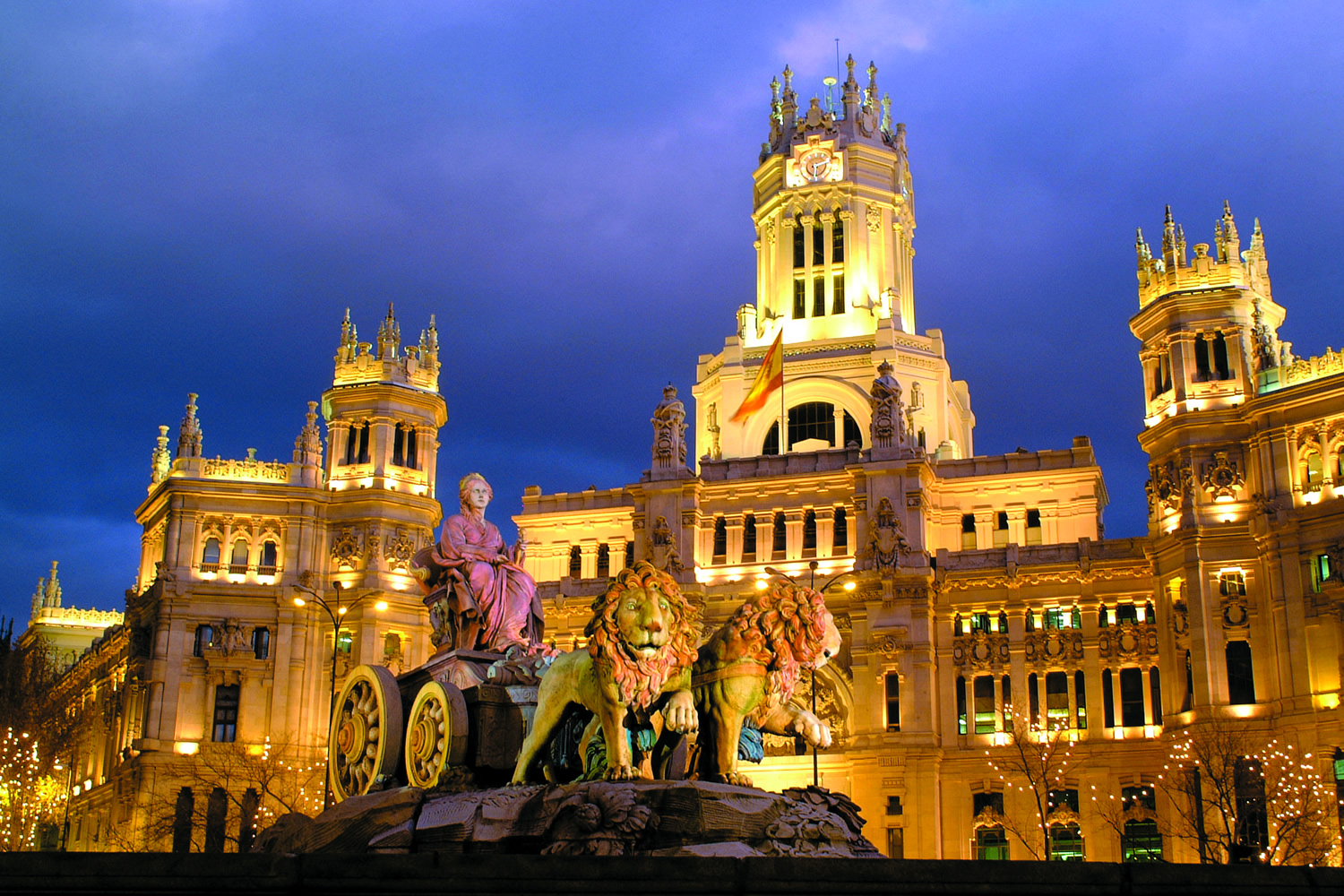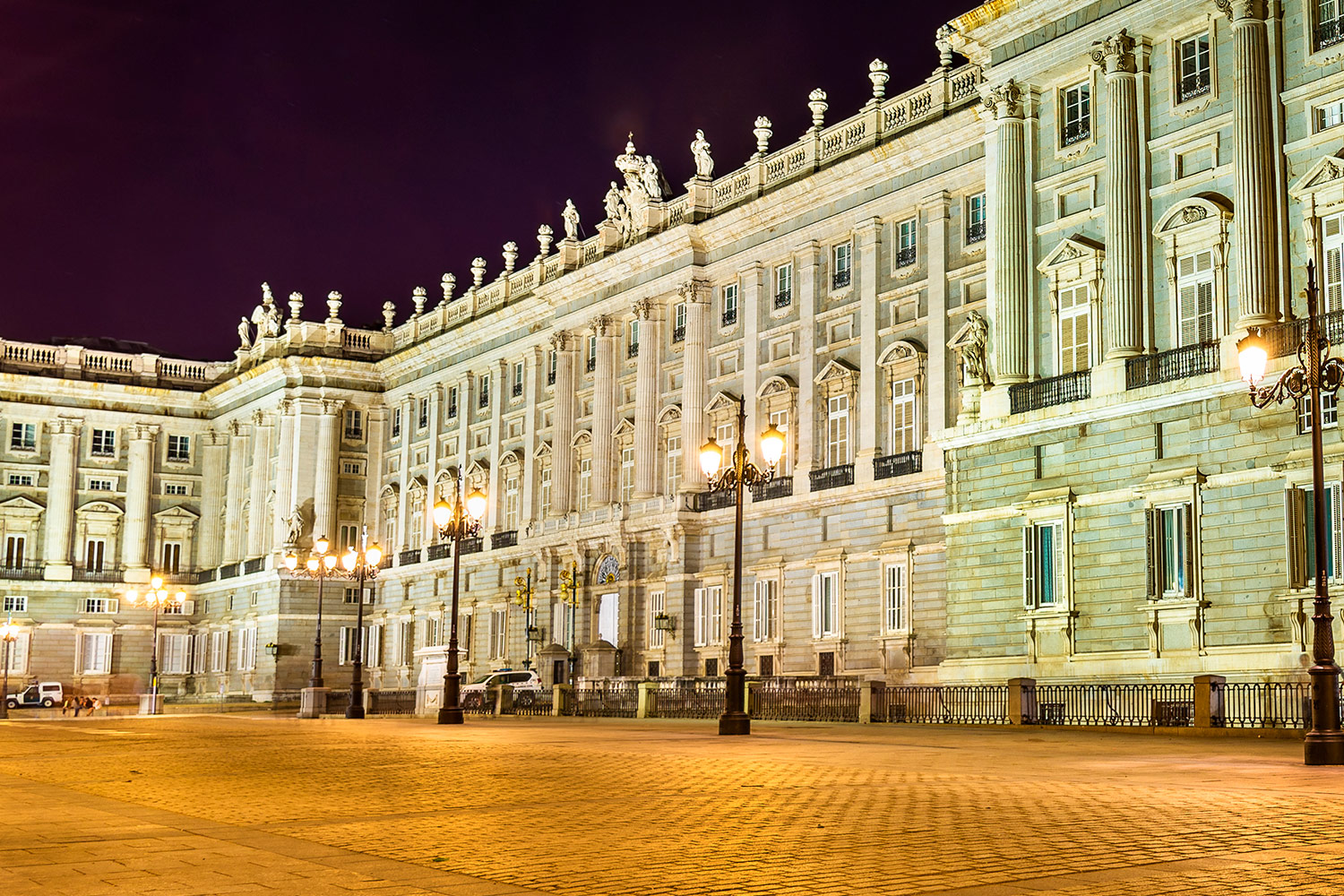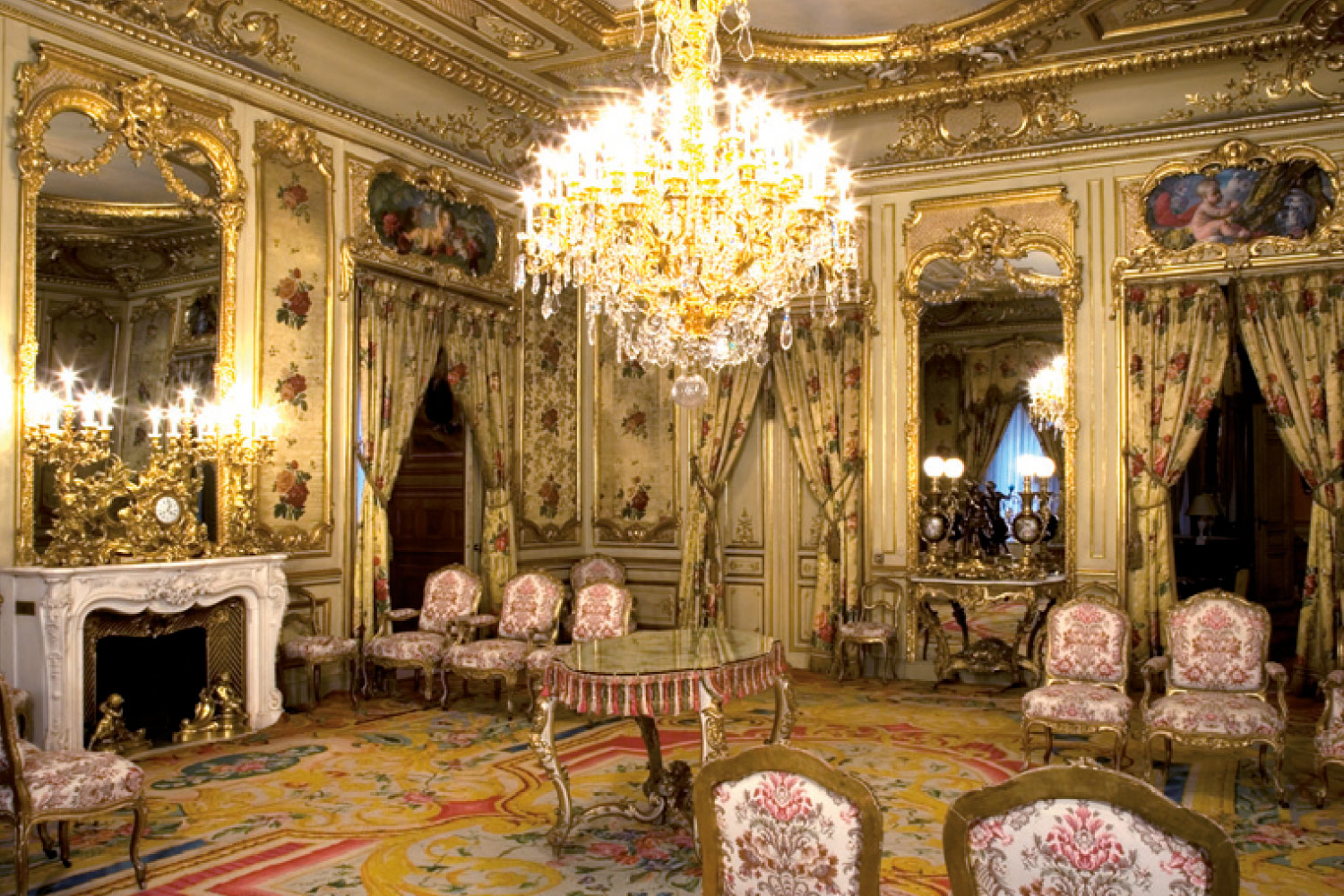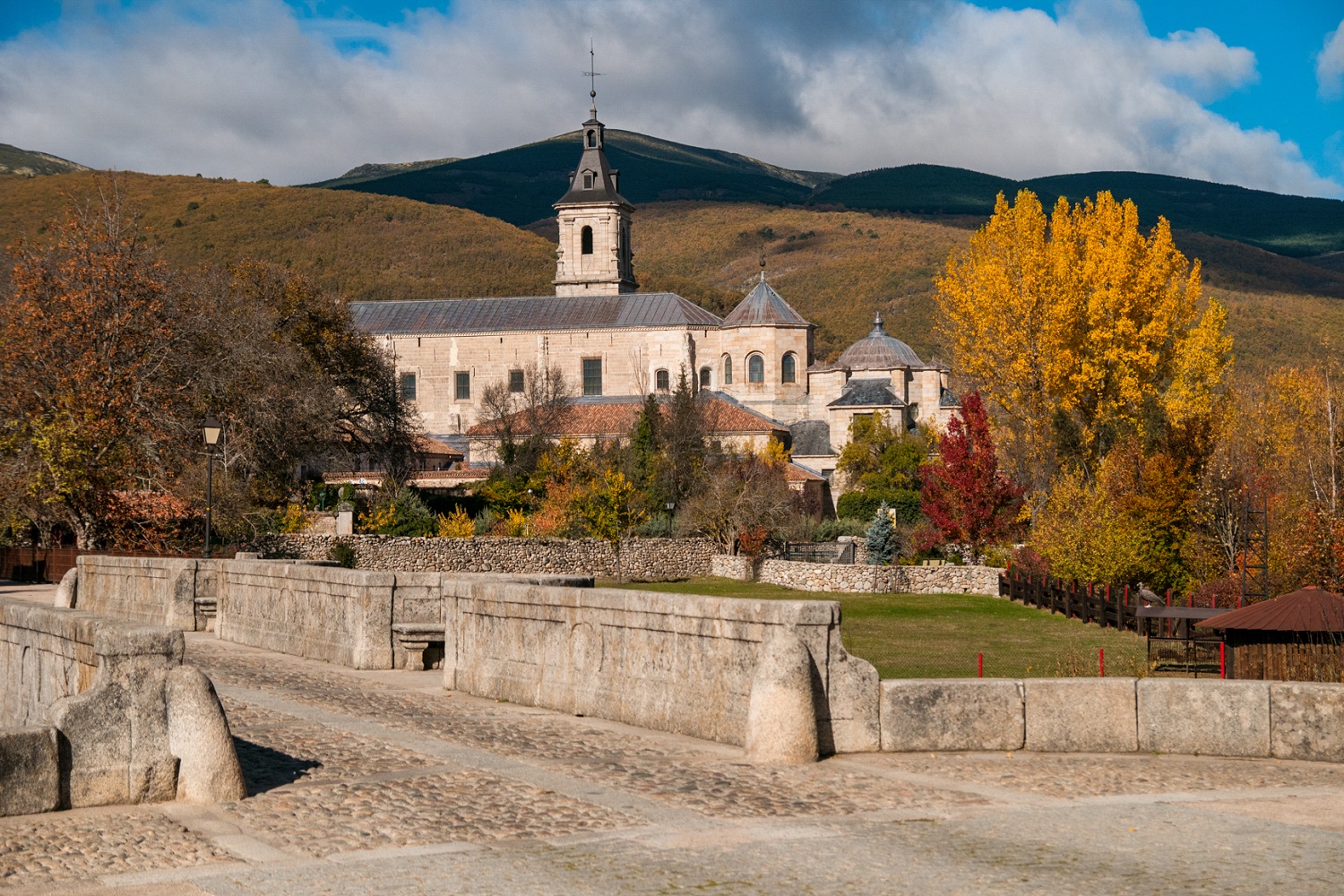
- Discover Madrid
- To see and do
- For you
- Accommodation
- Plan your Trip
- Professionals

Things to do in madrid
iconic places in madrid
Itineraries in Madrid
sights in madrid
top attractions in madrid
museums in Madrid
Tourism in Madrid

PALACES AND MONASTERIES
Discover the region of Madrid through its palaces and monasteries. Civil of religious, these magnificent constructions are all over the region.
The footprint of the court and the religious orders
The establishment of the Court in Madrid left its footprint on buildings like the Royal Palace or the Crystal Palace and spring and summer houses in Aranjuez and San Lorenzo de El Escorial.

The religious orders on the other side, also left their footprint in the Monastery of the Descalzas Reales just in the city centre, the importance of Cisneros in Alcalá de Henares or Monasteries as old as El Paular, in Rascafría.
Available guided tours
The Region of Madrid promotes a program of guided tours in six museums, where you can learn from experts the architectural evolution of the buildings, the ornamentation stages as well as the uses of the buildings.
The tours are usually for free and you have to book them previously on internet (www.bienvenidosapalacio.es) or by phone. We present you below the six palaces that you can visit.
Palace of the Marquis of Fontalba: Located in the Paseo de la Castellana. It is a clear representative example of the houses of the burg nobility in the beginning of the 20th century. Currently it is the State Prosecutor's General Office.
Small Palace of Mr. Guillermo de Osma: one of the most peculiar buildings in the Chamberí neighborhood due to its neo-Mudejar style. Today it is the Valencia don Juan Institute.
Fernán Núñez Palace: It is a palace from the queen Isabel II period. It is located in the surroundings of Atocha and it preserves a huge collection of carpets and tapestry, lamps made of Murano glass, silks and other luxury elements. Today it is headquarters of the Spanish Trains Foundation.

Godoy Palace: It has been declared a Place of Cultural Interest in 1962. It is located close to the Royal Palace, the Senate and the Convent of the Incarnation. Its stairs are one of the most valuable pieces of the architecture of Madrid. Currently, it is the Centre of Political and Constitutional Studies.
Bauer Palace: Located in San Bernardo Street crossing the Pez Street, it was declared historic monument in 1972. It is one of the last remains of the manors that occupied San Bernardo Street in the 18th century. Currently it is the High School of Singing.
House-palace of Mr. Manuel González Longoria: Located in the Jerónimos neighborhood, in the fields of the Royal Palace of the Great Retirement. Inside it you can watch the original furniture from the 19th century. Today it is headquarters of the College of Notaries.
Also visit the monasteries
The religious orders left an important cultural legacy in the Region of Madrid, visit them to get to know our past better.
Monastery of the Descalzas Reales: It is located just in the centre of Madrid, which was the former home of Carlos I and the place where his daughter Juana was born. When Miss Juana widowed, she founded a convent there in 1557. You can visit her thumb in the chapel, with a funerary sculpture of Pompeyo Leoni. In the monastery the church stands out, and inside the monastery you can watch more than 10.000 artworks that will make worth your visit. The paintings of the stairs and the Chapel of the Miracles, or the Tapestry from Brussels over Ruben artworks representing the Apotheosis of the Eucharist are also outstanding elements. Moreover, there are also artworks of artists like Juan de Mena, Gregorio Hernández or Francisco Ricci among others.
Royal Monastery of the Incarnation: It is close to the Monastery of the Descalzas Reales and it was founded by Felipe II and his wife Margarita of Austria in 1611, by the architect Juan Gómez de Mora. From the convent, the church stands out, being very interesting the façade made with granite. Over the entrance you will see two coats of arms and a drawn in old relief that represents the Assumption. Inside, the superb decoration of Ventura Rodríguez stands out, with marbles and bronzes, and artworks of Vicente Carducho, Francisco Bayeu y los brothers González Velázquez. In the old closure, you can find nowadays a museum where you can visit many treasures from the convent created by Lucas Jordán, Juan van der Hammen, Vicente Carducho, Gregorio Fernández or Pedro de Mena. You must pay attention to a reliquary made with 700 pieces of bronze, coral, ivory and wood.
Monastery of San Bernardo ("las Bernardas"): it is located in the historic-artistic ensemble of Alcalá de Henares. It is a Baroque temple from the architect Juan Gómez de Mora. The superb oval dome surprises, since it is the biggest of Spain. In the whole ensemble you can watch paintings of Angelo Nardi. Do not miss the Convent Museum, where you can watch paintings, sculptures and the most intimate corners of the life of the nuns, like the cell of the founder or the kitchen. Among all the artworks and the objects stand out the Silver Trunk and the ebony of Carlos V, commissioned by his son Felipe II, the chair of the cardinal Sandoval and the facsimile of the Complutensian Polyglot Bible. All of this make this place a corner full of art, culture and history.
Monastery of the Immaculate Conception: located in the Square of the Duchess of Alba in Loeches, known in the town as "The Great Convent". The monastery was founded in 1640 by Felipe IV, the Count-Duke of Olivares. Inside we find the pantheon of the descendants of the Count-Duke of Olivares, the Duchess of Alba and her family. The monastery has a Baroque style and it has a façade similar to the convent of the Incarnation. On its roof there is a chapitel made with blackboard, under which we find a great dome. Inside, the aisle has big paintings from Fernando Calderón, that reminds us of the style of Michael Angelo and they are inspired on the artwork "El Sueño de Felipe II". By the beginning of the 20th century, a new luxury pantheon was built when the Alba family got married with the Fitz-James Stuart family.
The monastery of El Escorial: The monastery of San Lorenzo of El Escorial is considered as the eighth world wonder of Juan Herrera. It is an impressive Renaissance building with Italian origins. The sobriety of the building together with its size, gives it a huge solemnity. The ensemble of the Royal Site of El Escorial has been declared the Heritage of Humanity by the UNESCO: It was conceived by Felipe II as a Royal pantheon and monastery. Inside it has 16 courtyards, 88 fountains, 13 oratories, 15 cloisters, 86 stairs, 9 towers, 1.200 doors and 2.673 windows. The Monastery built with stones from the Guadarrama Range is grid-shaped, representing the martyrdom of San Lorenzo. It has a nave with a 55 meters tall tower in each side, being the Kings courtyard in the middle. Walk around the ensemble, visit the great basilica that will surprise you with its plain dome, the Main chapel designed to host beneath the crypt, and the library with one of the best archives of the World. All of this comes together with gardens and palaces. Learn more: Royal Monastery of El Escorial.
Monastery of El Paular: It is located in an uncomparable natural landscape, in the Lozoya Valley (Rascafría). It is the first Carthusian monastery in Castilla. Although its construction begun in the 14th century it was not until the Catholic Kings when it was finished, building the aisle, the Gothic-Isabel doors and probably the alabaster altarpiece of the presbytery of the Sagrario chapel. Due to the several stages of construction, it has four different styles of the Spanish art: Gothic, Baroque, Renaissance and Flemish. The alabaster altarpiece stands out, which cover the headrest pf the second half of the 15th century. It is also outstanding the façade with drawings of the Old Testament and the cloister of great dimensions. Learn more: Monastery of El Paular.

Convent of la Cabrera: The current Convent of San Julián and San Antonio of La Cabrera is, without any doubt, the most ancient monastery of the Region of Madrid. It was a Benedictine monastery with a Roman style with great value. Although the exact date of its foundation is unknown, it is though that it was promoted during the Reconquest in the 11th century, unless other theories believe that it was in the 12th century. The monastery is located in a privileged environment just in the Cabrera Range, surrounded by one of the best landscapes of the Region of Madrid. The most important element is the Roman church, that despite of the little dimensions it has complex elements that contrast with the sobriety of the decoration, since it does not have any sculpture. Learn more: The Cabrera Convent
Monastery of Valdeiglesias: The ensemble of Cistercian ruins of the Monastery of Santa Maria the Royal of Valdeiglesias is located in the right side of the San Juan reservoir, in Pelayou de la Presa. Is one of the most important medieval monuments of Madrid, but it is not popular. Its origins are from the reign of Alfonso VII of Castilla in the 11th century. The monastery was constructed following the Cistercian European standards of the 12th century, leaving its seven centuries of existence samples of different styles (Gothic, Baroque, Renaissance and Romanic-Cistercian and Romanic-Mudejar). After the disentailment of Mendizábal in 1835, the monastery was abandoned and it was not refurbished until 1974. Learn more: Monastery of Valdeiglesias
Down for some more?
If you want to know more about the palaces and monasteries of Madrid, download this guide and get to know its secrets: Routes Around Palaces and Monasteries in the Region of Madrid Comunidad (PDF)
Images Credits:
Palacio de Cibeles © Comunidad de Madrid
Palacio Real de Madrid © Comunidad de Madrid
Palacio de Fernán Nuñez © Comunidad de Madrid
Monasterio de Santa María de El Paular © Czuko Williams